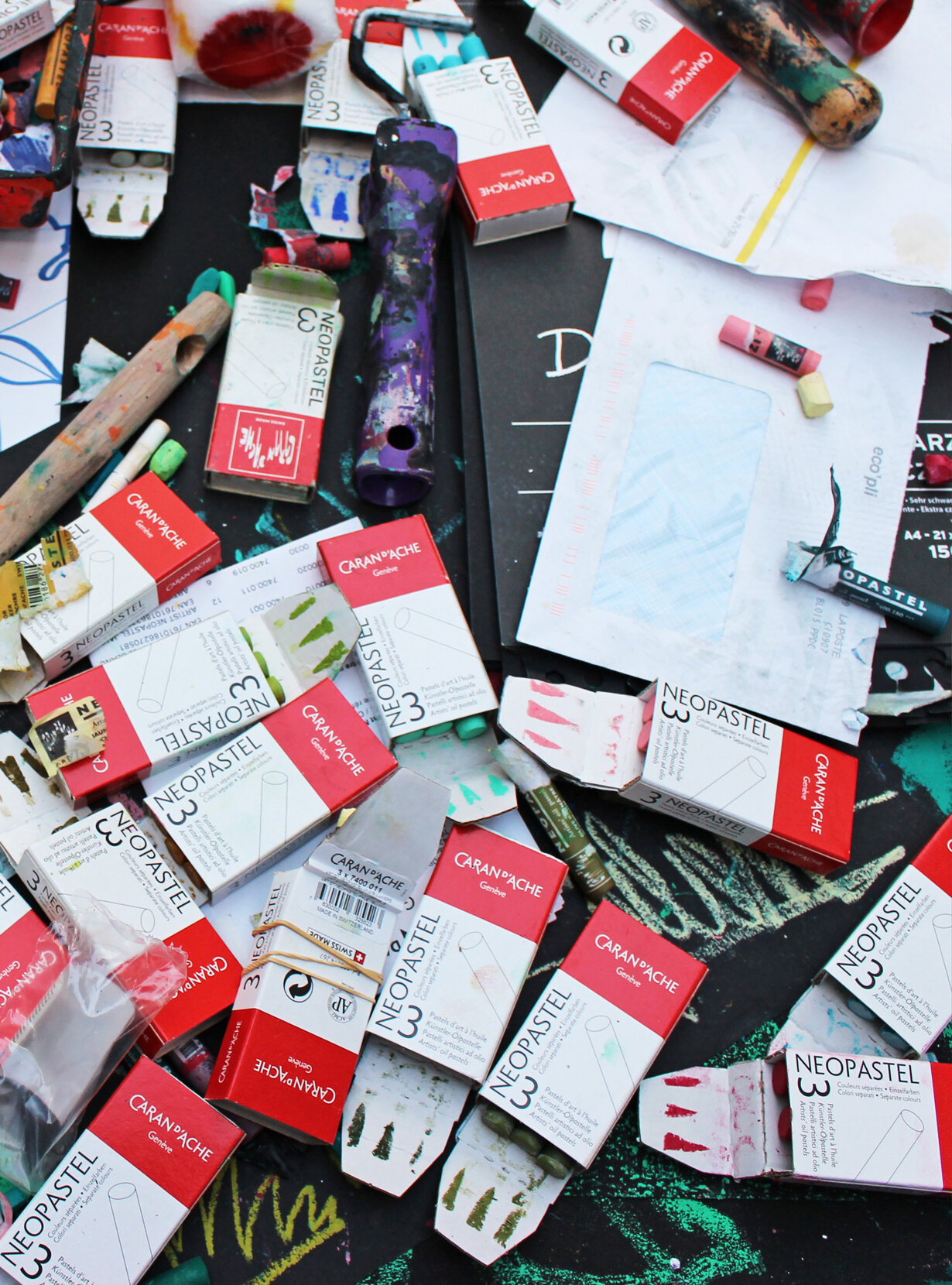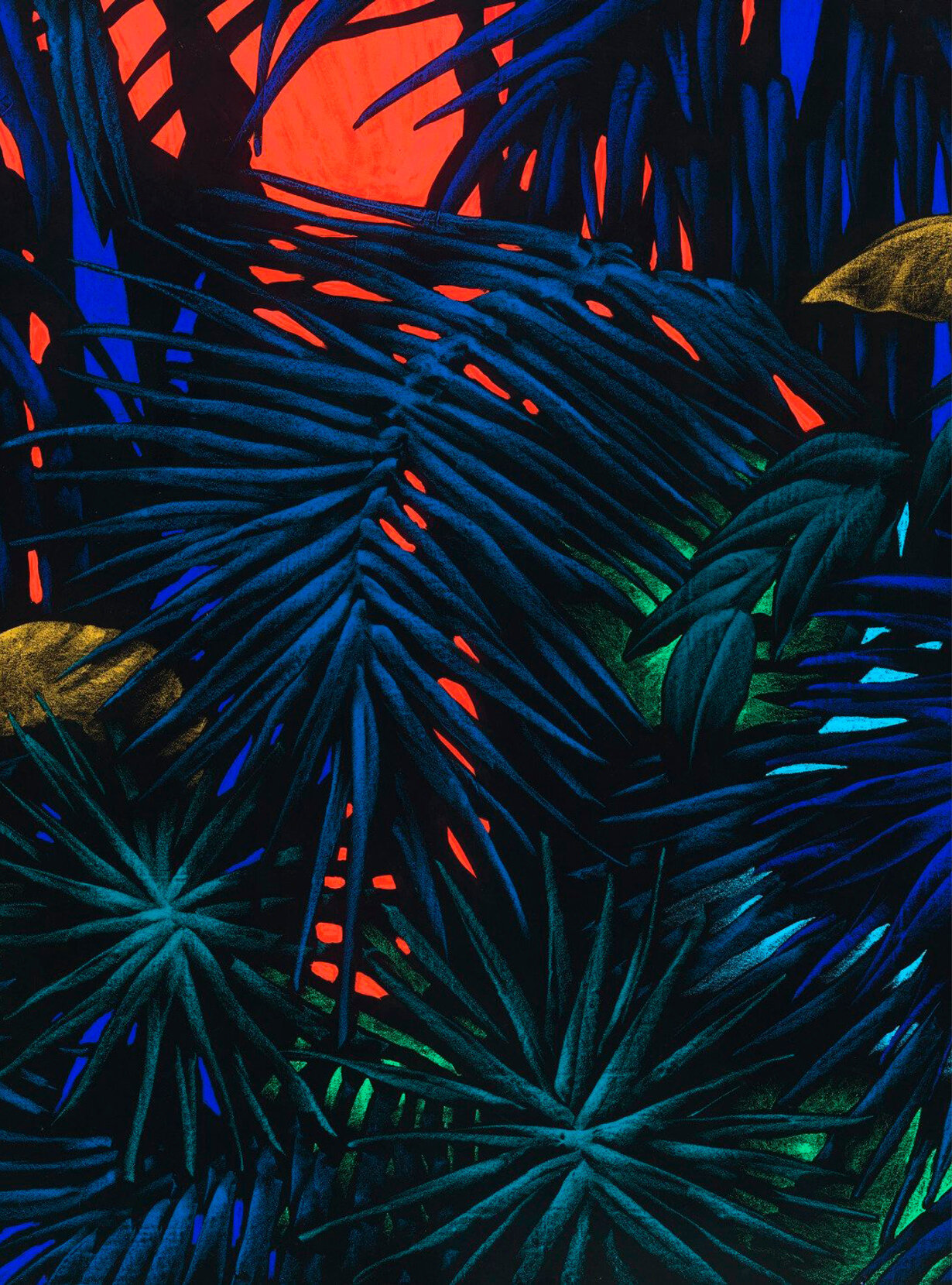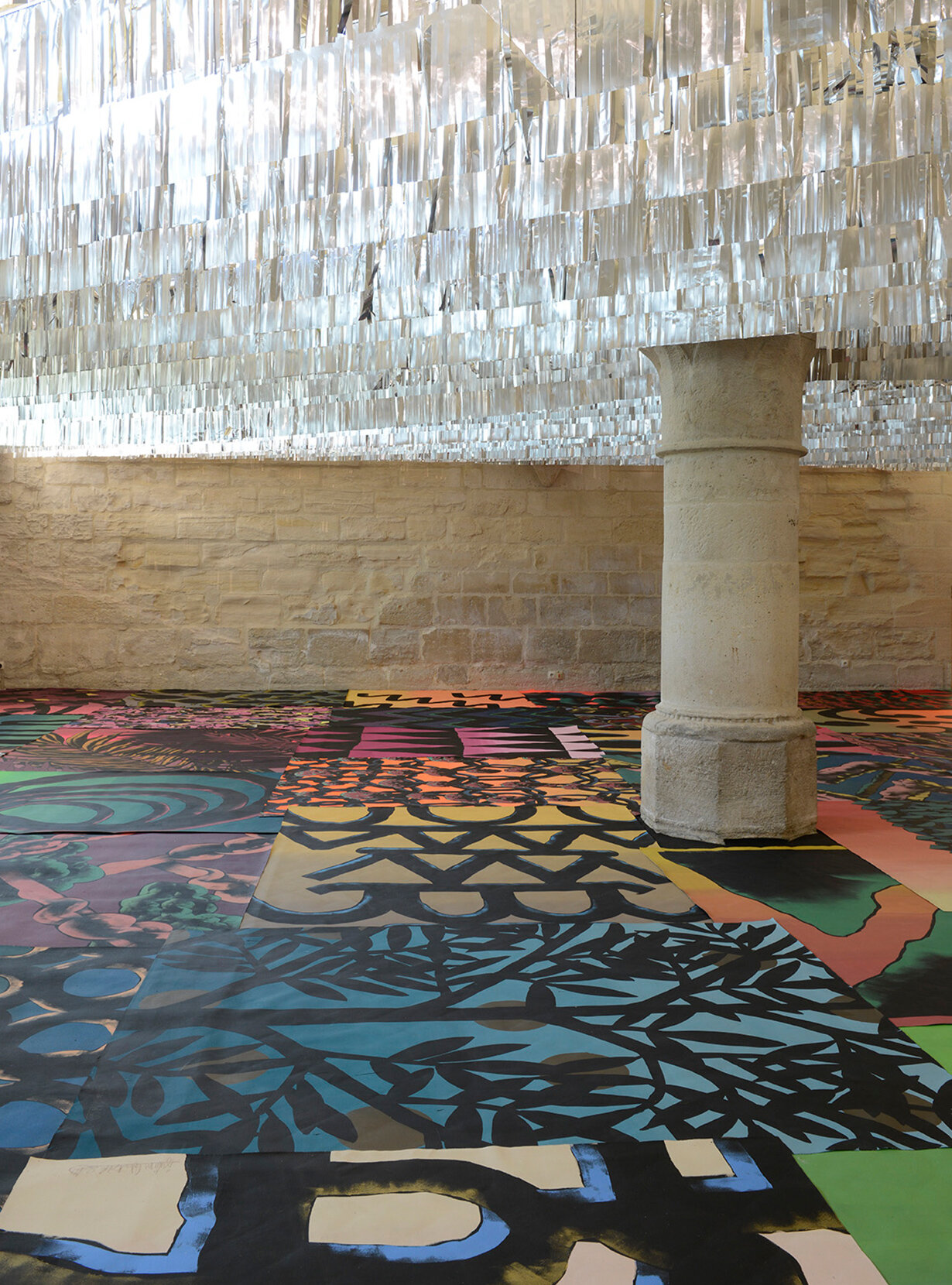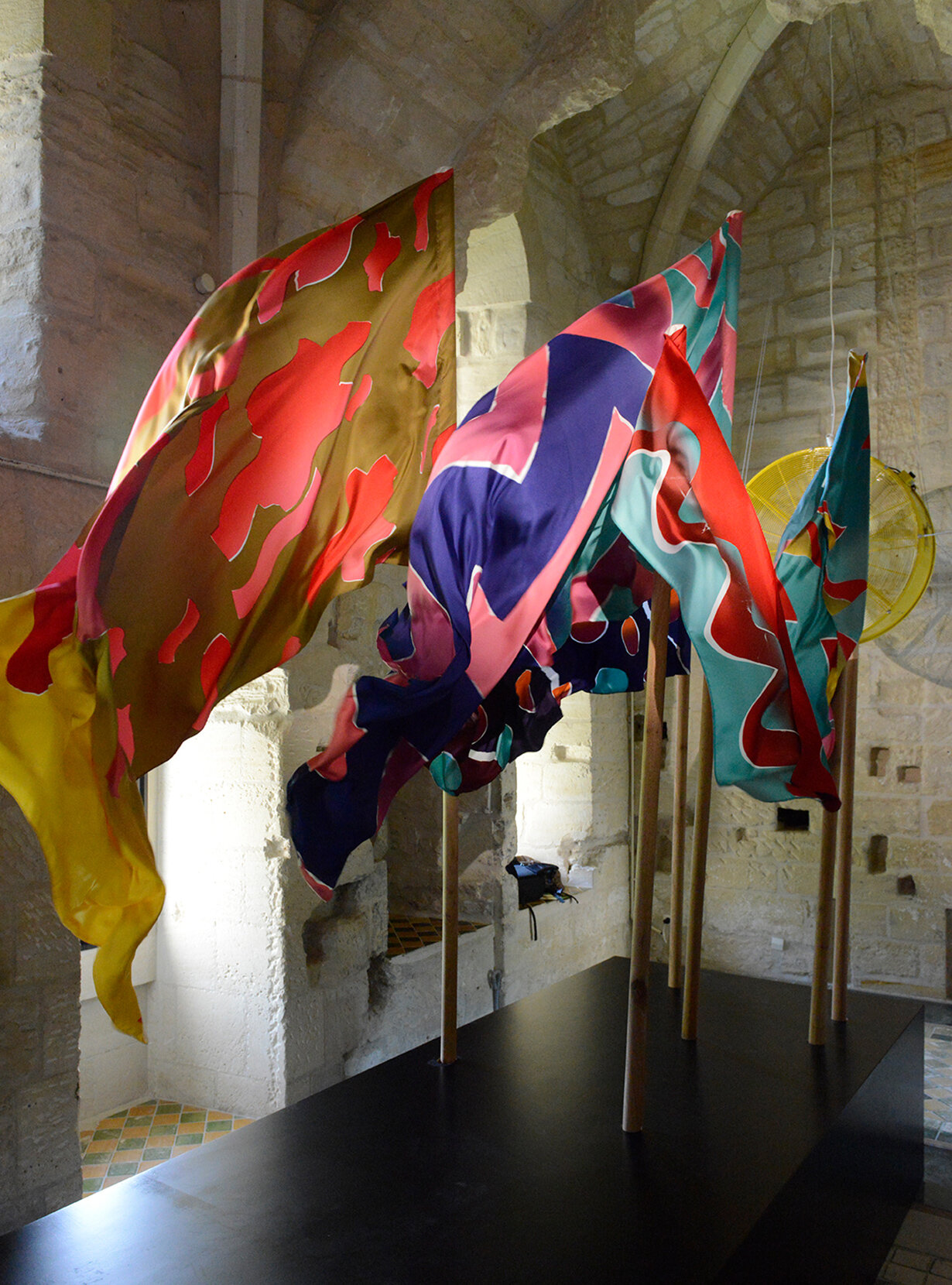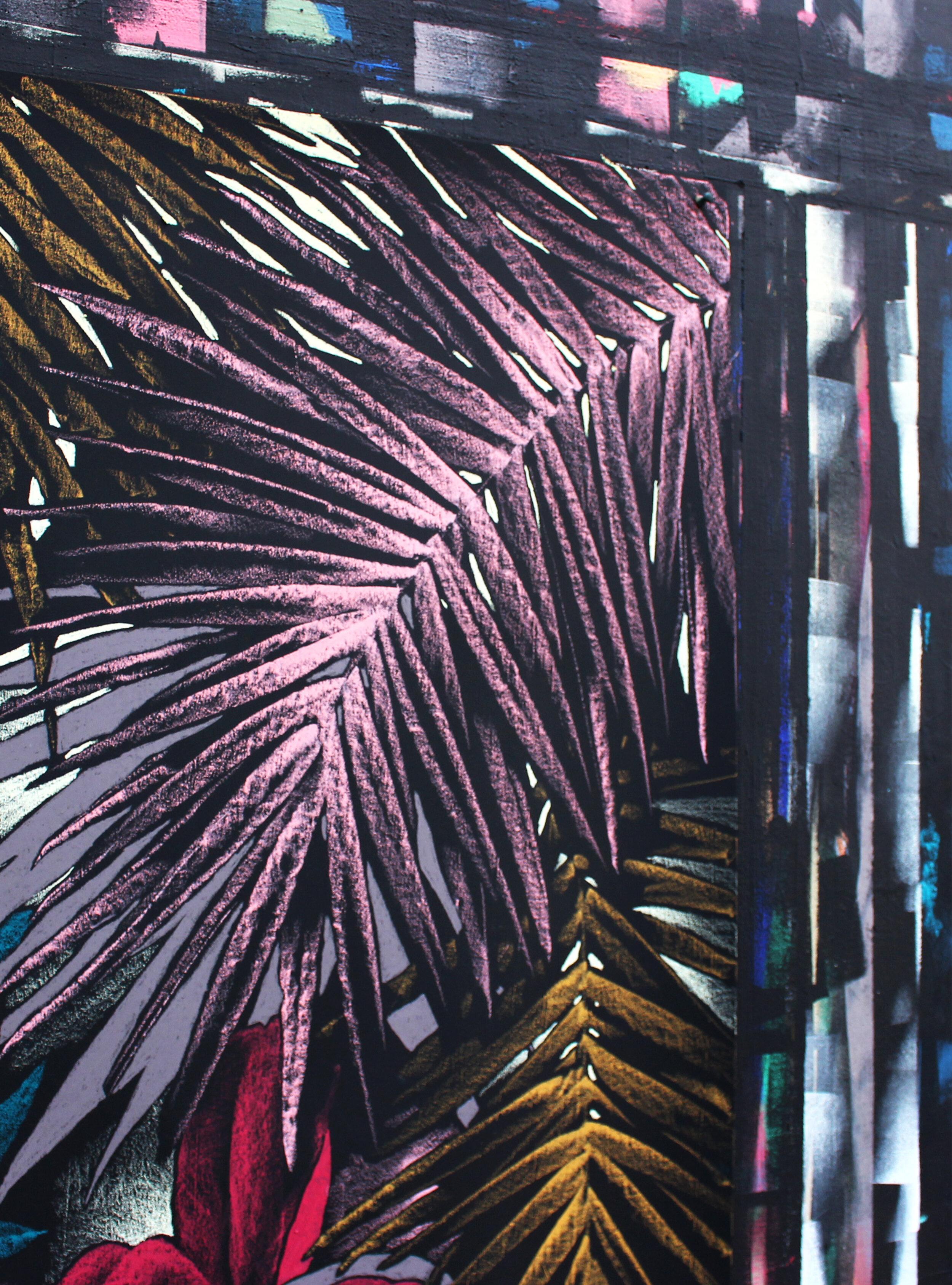Julien Colombier
Julien Colombier
We sat down and talked with talented and visionary artist Julien Colombier about his inspiration, his work and his latest exhibition.
How did you start painting? And how did you start using pastels?
I started drawing in kindergarten and never stopped. I left school early and began working a lot of random jobs. At the time, I was very influenced by graffiti and the 80s skate culture — it was the beginning of the whole urban underground movement. I wasn’t sure what my style was, but I did what I liked, going at my own pace. I’ve been painting for years. One day, since I no longer had a studio, I mounted a big black chalk wall in my room. I would draw on it every day and I loved how it would turn out. I looked for a way to integrate this style into my practice. Oddly enough, between the search for a new technique and the desire to be more literal and precise with subject matters, I found my style. With pastels, I work from a black background to which I add light. Everything melds together in the dark. You can grasp the shapes thanks to the light. It took a lot of training to get this result and it’s become my signature style. I’m gradually starting to use acrylic to challenge myself. I’m so comfortable with pastel that there are rarely any accidents. I like working with acrylic right now to bring back elements of surprise into my paintings.
How did the exhibition at the Maubuisson Abbey come to life? It must be pretty different to work in such a unique place.
I was given “carte blanche” for this project. I first worked on my notebook and then I had to spend time on-site to understand the extent of the space — it has a very imposing architecture, particularly with its very colorful tile floor. My goal was to create massive art pieces that would respect the space. In the first room, I placed about one hundred paintings on the floor. The scale is completely different though when the paintings are in such a large space — I initially had planned on displaying 50 canvases, but I had to double that number.
The exhibit ended up being a mix between what I imagined and what the space dictated. I wanted the exhibit to be harmonious with the unique architecture of the space; I worked on the exhibition for six months, two of which I spent in my studio and one on site. On site, I spent two intensive weeks working on the sculptures until 3 a.m. every night. I wanted each area to have a different rhythm. The first room, that had the paintings on the ground, was very horizontal; the second room was in the dark and was narrower and more oppressive; the following room had immense sculptures surrounded by columns; the final room was smaller and more intimate, set up with flags. I’ve had this idea of flying flags indoors for a long time. I wanted this to be in a small room. I worked with a craftsman in Lyon to print these flags in screen print. I was happy to finally be able to bring this vision to life. Finally, it was also important to me that the back of the sculptures be displayed so that the viewers also had art to look at on their way back.
Can you give us some background on the garlands in the first room?
India was the source of my inspiration for this exhibit and the theme of religion seemed obvious due to exhibit’s location in an abbey. When I asked myself what the exhibit meant to me, I thought about my trip to India, which to me represents the sacred, the celebration. I used a short film that I had shot on the trip along with some Bollywood music, and added garlands. I placed them in this first room to create the impression of a lower ceiling to focus the viewers’ attention on the floor — it also helped bring in some light.
Why did you choose the plant world? From where do you get your inspiration?
At first I was very influenced by street culture, I drew characters who often ended up being self-portraits. Gradually, the characters evolved into animals, but somehow they were still self portraits — the dogs and cats I was drawing looked like me. So I moved onto animals more distant from humans, drawing an octopus, then jellyfish… Working on the the jellyfish tentacles led me to explore a more plant-based universe that I immediately liked; it was very poetic and urban at the same time. A jungle is very organized but never the same, that's what fascinates me more than copying nature itself. I love this randomness. I am particularly interested in the rhythm of plants and the effect of gravity on them. The way they fall, rise, twist... Now I’m exploring more abstract, more mineral forms even though I’m more known for my plant world work.
Was there a key moment in your career that really changed your career?
A few years ago, AD magazine published an article about my work — tropical themes were very trendy at the time. After that, Chanel contacted me to collaborate on an installation for a pop up at Harrods. Then, other brands approached me, especially for my plant life work. Lately, I’ve been turning towards Contemporary Art, stepping into first with the exhibit at the Abbey and then with solo exhibit at a new gallery. I’m very happy about it.
How easy is it to work with a big brand like Dyptique?
I am always attentive to the brief, but I find it difficult to present preparatory sketches because it is almost as much work as the work in itself. Typically, clients first come to my studio so I can explain the process to them, then we align on a style together. In the case of Dyptique, the clients needed three distinct atmospheres: one red, one blue, and one green, each corresponding to three scents. We were able to create a very coherent foundation, which was easy to apply onto the gifting, gift wrap, ribbons, bags, press kit… It was a real pleasure to work with clients who have great respect for the artists they collaborate with.
Now I sometime say no to collaboration if I feel that my style has little to do with the product. For example, I just finished a project with Mansour Martin, a clothing brand that really tries to make fashion sustainable, every step of the way. It is a unisex brand with a beautiful identity. I was glad I worked with them.
What is a typical day for you?
It’s quite new for me to have a typical day. I take my daughter to school, then I go to the studio where I drink 10 coffees while I catch up on emails. Then I start drawing — I can do one or two drawings a day. I work all day until I have to pick up my daughter after school. I had to change the way I work a bit because before I was efficient from 5 p.m. to 3 a.m., which is not very compatible with family life. When I have a big project, I have a more defined timeline and schedule. When I have down time, I experiment, I draw for myself.
How do you find a balance between personal and professional projects?
For me, personal and professional projects are linked. When I do collaborations, I try to show my clients what I'm working on at the moment, taking into account the brief of course. And clients’ briefs tend to inspire my personal work. Right now, my problem is that everyone is asking me for “Blue Jungle" which is my ”bestseller". People love the blue color — and I love it too, but I also want to show other aspects of my work. I almost called my exhibit “No More Blue” as a joke, but I changed my mind. I still love to paint the “Blue Jungle” no matter what, and people who discover my work often discover it through that. So I try to add other elements in a subtle way, little by little. At Maubuisson Abbey, I worked with new patterns, less jungle patterns in the first and the last room. It felt great!
https://juliencolombier.wordpress.com
@juliencolombier


